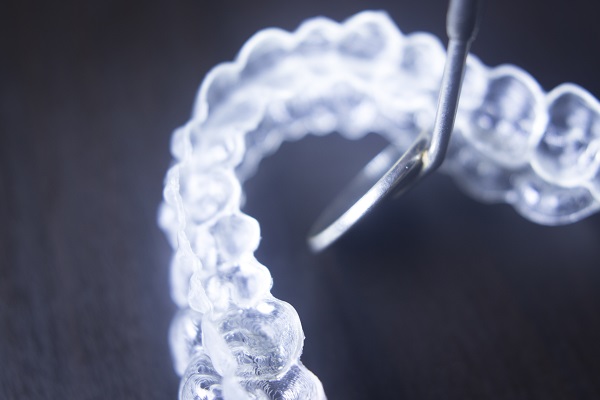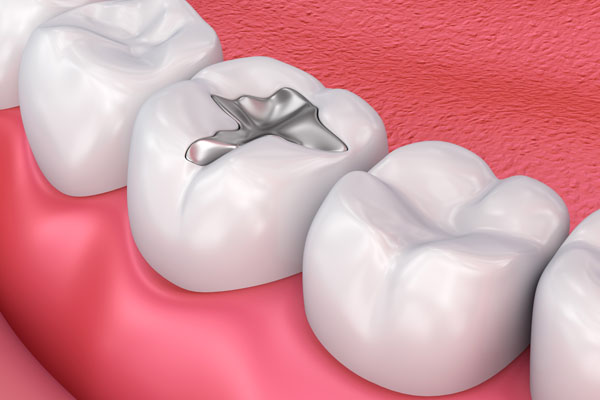A General Dentist Offers Tips On How To Get Used To Invisalign

There is often an adjustment period for patients after they start wearing their Invisalign® aligners. It is important to follow the advice of a general dentist when adjusting to the new aligners to ensure the process goes smoothly and the patient becomes comfortable with them as soon as possible.
Adjusting to life with Invisalign®
There are certain things every Invisalign® patient can do to reduce the time it takes to get used to wearing the aligners. Although every patient should find what works best for them, the following are four effective tips from a general dentist to implement while adjusting to a new life with Invisalign®.
Wear aligners consistently
First and most importantly, patients must wear their aligners as directed by the general dentist. Most dental professionals recommend wearing the Invisalign® aligners between at least 20 to 22 hours each day. Patients will most likely have a natural urge to take them out just for a moment when they first start wearing them and experience an awkward feeling or discomfort. However, it is very important to leave them in to ensure they work properly and the patient is able to adjust as quickly as possible.
Practice talking early on
One of the first things patients often notice when they start wearing their new Invisalign® aligners is that they have a lisp while talking. If this occurs, remember to not panic as it is temporary and patients get used to talking normally with the aligners rather quickly. To speed up the adjustment process, it is encouraged to have a conversation with someone after first putting them in. This allows them to get the awkward phase out of the way and to get comfortable speaking.
Use pain relief for discomfort
The discomfort with Invisalign® is typically tolerable, but there will be some discomfort and potential numbness that exists during the adjustment process. The general dentist may provide instructions on how to deal with and minimize the discomfort, and it is important to follow the instructions they give. If they do not provide instructions, then taking over-the-counter pain reliever as directed can help, along with using a cold compress to relieve the discomfort of the jaw.
Consider dietary changes
For the first week, there will likely be discomfort. Another useful way to make the adjustment easier is to eat a diet of soft foods, such as oatmeal, scrambled eggs, yogurt and soup. Excessive chewing of hard foods may lead to increased discomfort. It is also encouraged to avoid foods that increase the risk of teeth stains during treatment. Patients should also consider substituting coffee and tea for water as much as possible.
Consult with a general dentist about Invisalign®
To learn more about Invisalign® treatment, reach out to our office today to schedule a time for a first visit. General dentists can discuss all available treatment options and help patients make an appropriate decision. We believe everyone deserves a smile they love, and it is our goal to guide patients through the entire Invisalign® process.
Request an appointment here: https://www.newyorkdentaloffice.com or call New York Dental Office at (212) 548-3261 for an appointment in our New York office.
Check out what others are saying about our services on Yelp: Read our Yelp reviews.
Recent Posts
Restorative dentistry refers to any type of dental procedure that a dentist performs to restore a damaged or missing tooth. Dental restorations can encompass several procedures that vary in terms of invasiveness, complexity, and what they can accomplish. However, the overreaching goal of all restorative procedures is to improve the health, function, and appearance of…
Dental restorations are for patients with missing, weakened, fractured, or decayed teeth. A restoration replaces or repairs missing teeth or parts of the tooth's structure. If a tooth shows signs of decay or may cause trouble later, dentists can strengthen the tooth to avoid future issues. When it comes to dental restoration, two common types…
A broken tooth is a common dental issue that can happen for many reasons, such as accidents, biting into something hard, or untreated tooth decay. Whether a dentist can save a broken tooth or needs to remove it depends on how severe the damage is and how quickly patients seek treatment. While modern dental techniques…
Dental restorations can improve overall health by decreasing the chances of infection, decay, and issues caused by broken or misaligned teeth. These treatments range from removing teeth, replacing tooth structures that have decayed, and correcting the patient’s overall bite to improving eating and drinking.A restoration may be performed for cosmetic or health-related reasons, but even…



